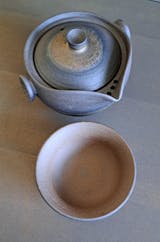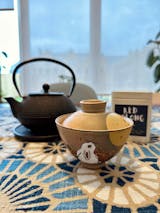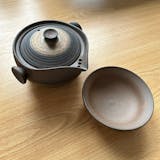
Yixing vs. Porcelain Teapots: Which One is Right for You?
Share
When it comes to choosing the perfect teapot, Yixing and porcelain teapots stand out as two of the most popular choices for tea lovers. Each has unique characteristics that influence the flavour, brewing process, and overall tea experience. Whether you’re a seasoned tea enthusiast or just starting your journey, this guide will help you decide which teapot suits your needs.
What is a Yixing Teapot?
Originating from China’s Jiangsu province, Yixing teapots are made from Zisha (purple clay), a porous material that absorbs the flavours of tea over time. These teapots are traditionally used for gongfu-style brewing, which involves steeping tea leaves multiple times in small quantities of water.
Benefits of Yixing Teapots:
✅ Enhances Flavour Over Time – The porous clay absorbs tea oils, creating a richer and more complex flavour with each brew.
✅ Ideal for Certain Teas – Best suited for oolong, black (red), and aged pu-erh teas that benefit from deeper, evolving flavours.
✅ Heat Retention – Retains heat well, allowing for optimal extraction of flavours.
Considerations:
❗Requires Seasoning – Needs to be dedicated to one type of tea, as the clay absorbs flavours.
❗Not for Delicate Teas – Green and white teas may become over-brewed due to high heat retention.
❗Handwash Only – Should not be washed with soap, as it can affect the absorbed flavours.
What is a Porcelain Teapot?
Porcelain teapots, widely used in China, Japan, and Europe, are made from non-porous, smooth ceramic that does not absorb flavours. This makes them versatile and ideal for brewing various types of tea.
Benefits of Porcelain Teapots:
✅ Retains Pure Tea Flavour – Since it doesn’t absorb flavours, each brew tastes fresh and unaltered.
✅ Versatile for All Teas – Perfect for green, white, oolong, black, and herbal teas due to its neutral material.
✅ Easy to Clean – Can be used for multiple types of tea without flavour contamination.
Considerations:
❗Does Not Enhance Flavour Over Time – Unlike Yixing teapots, porcelain does not develop a tea patina.
❗Less Heat Retention – Cools down faster, which may not be ideal for teas requiring high temperatures.
❗More Fragile – Can chip or break more easily compared to Yixing clay teapots.
Which One is Right for You?
| Feature | Yixing Teapot | Porcelain Teapot |
|---|---|---|
| Material | Porous clay | Non-porous ceramic |
| Flavour Absorption | Yes – absorbs flavours over time | No – maintains pure tea taste |
| Best for Tea Types | Oolong, black, pu-erh | Green, white, oolong, black, herbal |
| Heat Retention | High – retains heat longer | Moderate – cools down faster |
| Cleaning & Maintenance | Handwash only, dedicated to one tea | Easy to clean, suitable for multiple teas |
| Durability | Sturdy but requires careful handling | Can be fragile and prone to chipping |
If you enjoy drinking the same type of tea frequently and want to enhance its depth and character over time, a Yixing teapot is a fantastic investment. However, if you prefer versatility, convenience, and the ability to brew multiple tea types in one teapot, a porcelain teapot is the better choice.
No matter which one you choose, both Yixing and porcelain teapots offer an enriching way to enjoy your tea. You can start by explore our collection of beautiful teapots. Happy brewing!







